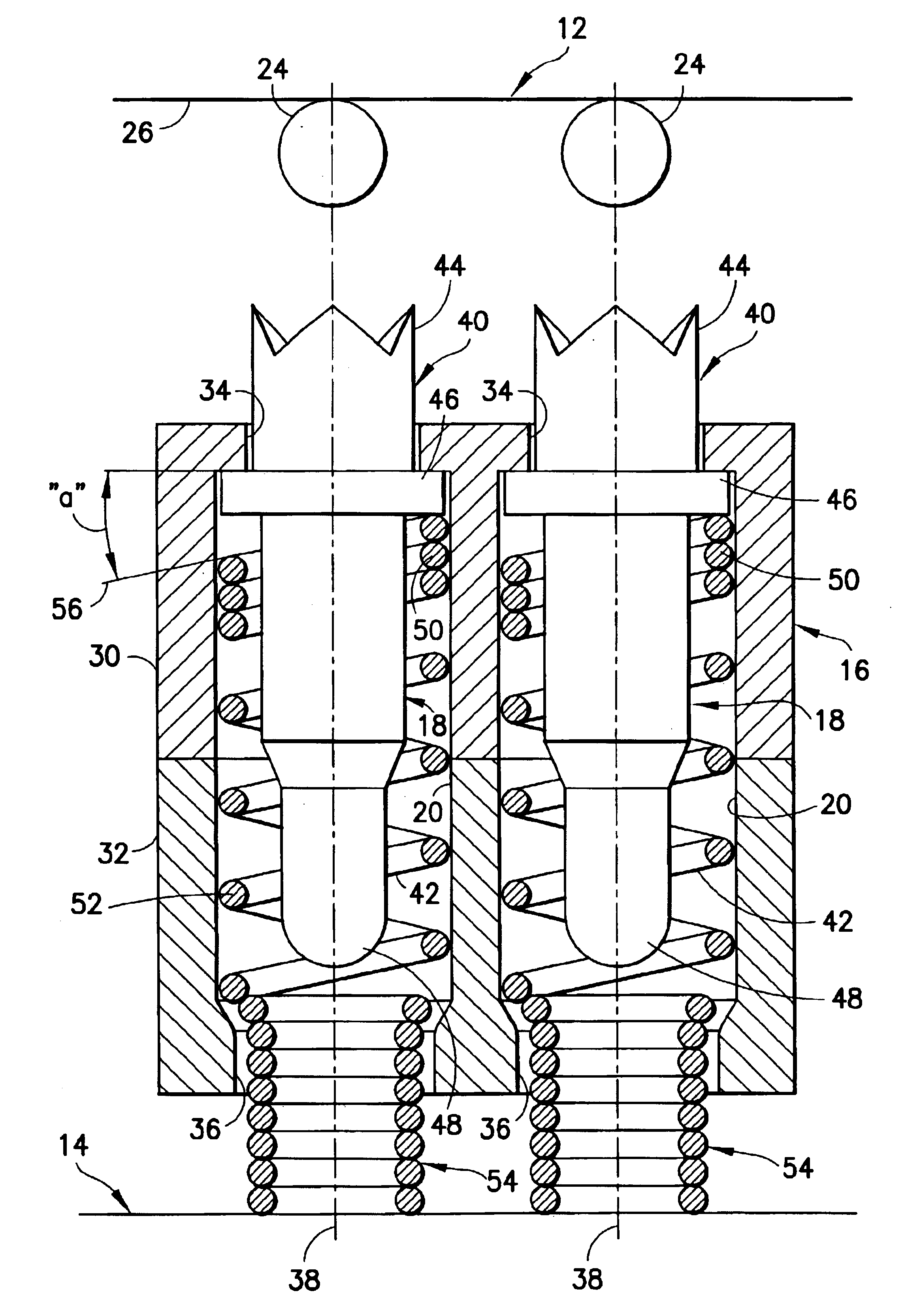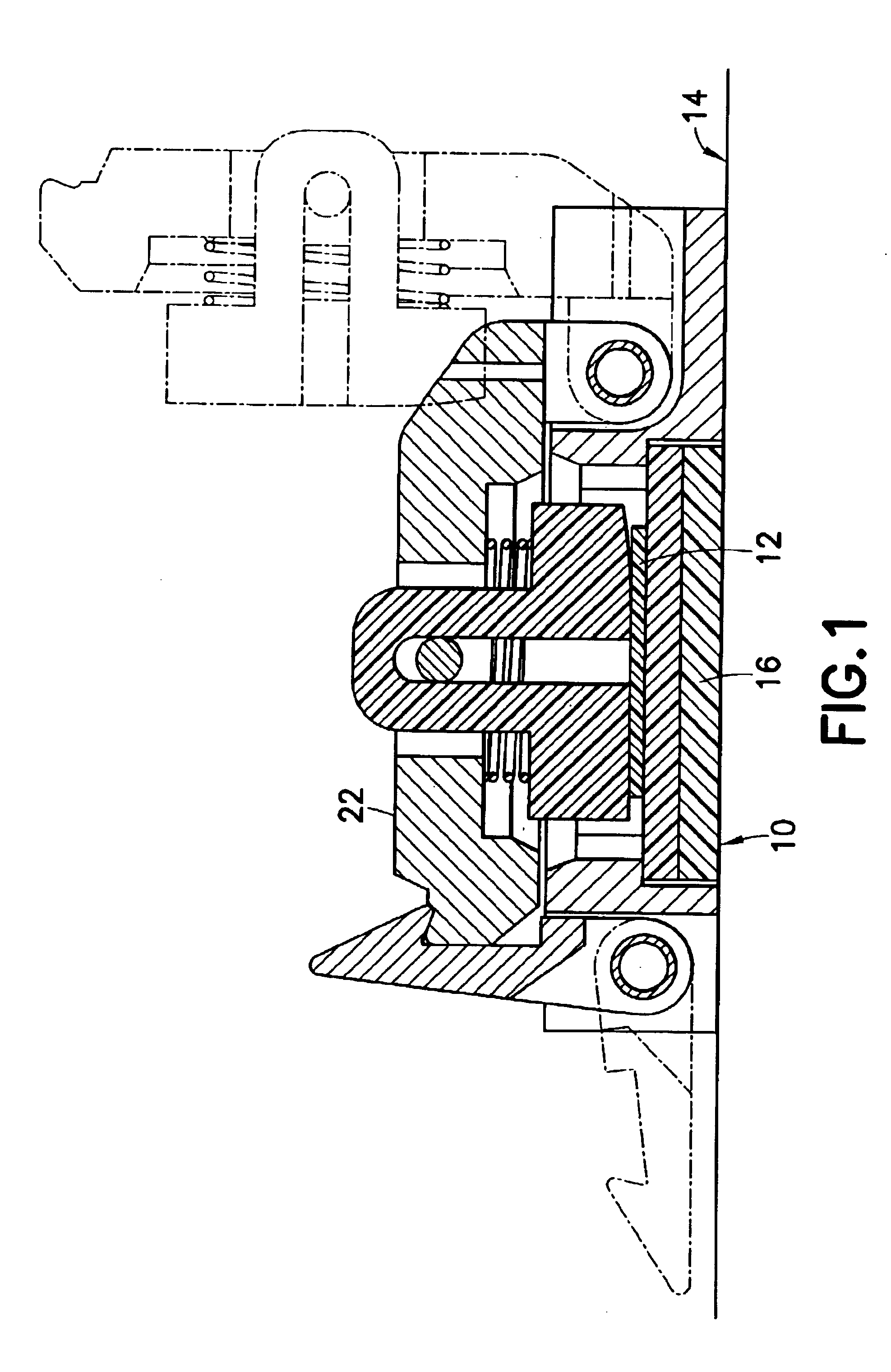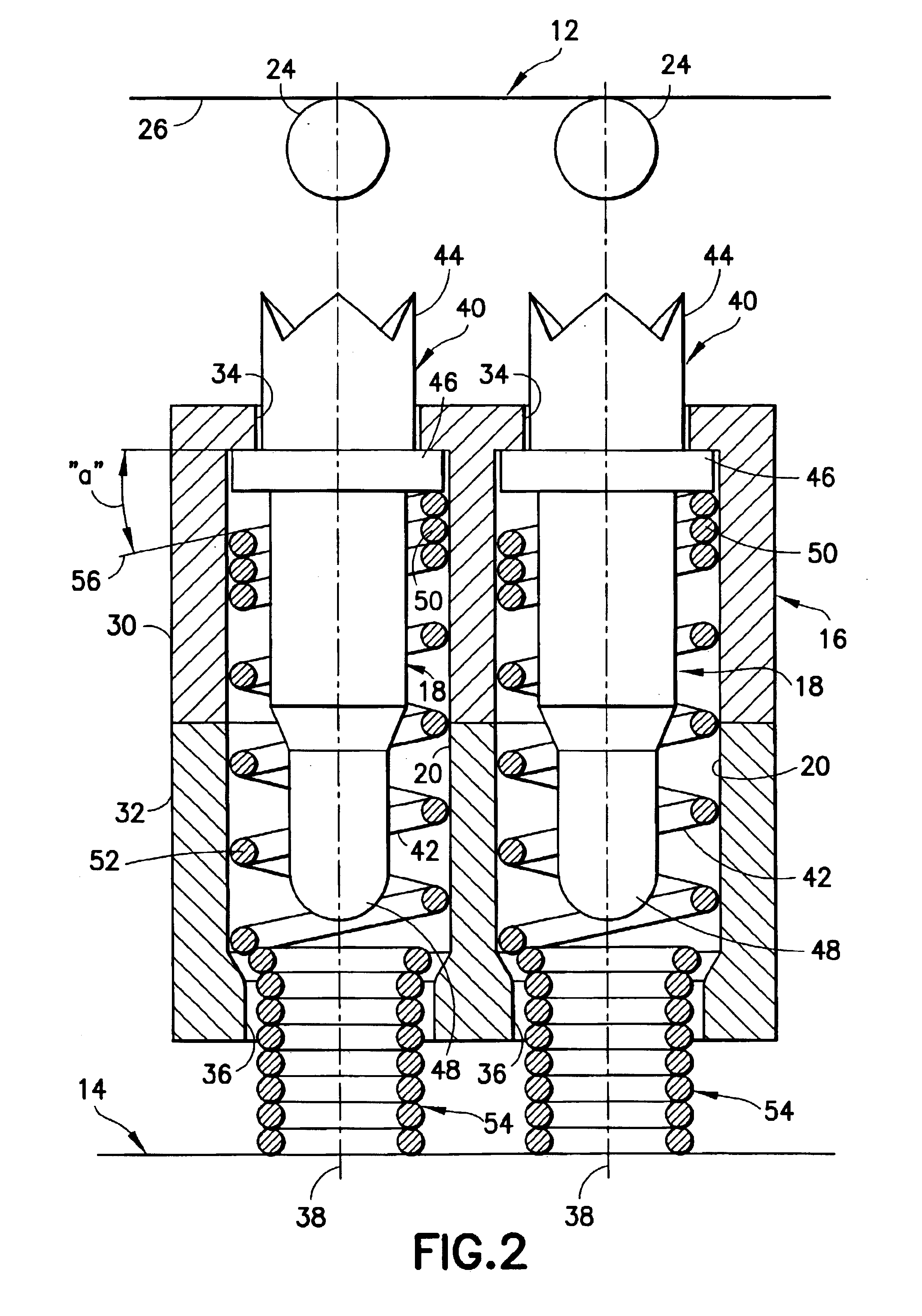Integrated circuit test probe
a test probe and integrated circuit technology, applied in the field of test probes, can solve the problems of low conductivity of the junction, difficult assembly, and designed for high frequency applications, and achieve the effects of low insertion force parameter, extended life of test probes, and high electrical connectivity
- Summary
- Abstract
- Description
- Claims
- Application Information
AI Technical Summary
Benefits of technology
Problems solved by technology
Method used
Image
Examples
Embodiment Construction
Referring to FIGS. 1-4, a new and improved connector assembly 10 is provided for connecting an IC package 12 to a printed circuit board 14. The connector 10 includes a non-conductive substrate 16 with a plurality of electrical probes 18 mounted in through holes 20 formed through the substrate 16. The number of the electrical probes 18 will generally correspond to the number of lands provided with the IC package 12. Also, the size of the connector 10 is also generally dependent on the size of the IC package 12. For purposes of illustration, the connector 10 of the subject invention will be shown and described in connection with a ball grid array (BGA) 12 package to a chip scale package (CSP) burn-in socket 22, as shown in FIG. 1.
It should be noted that the connector 10 need not be formed with the same dimensions as the IC package 12 for purposes of this invention. However, the electrical contacts 18 must be disposed in the connector 10 such that the pressing contact is achieved betwe...
PUM
 Login to View More
Login to View More Abstract
Description
Claims
Application Information
 Login to View More
Login to View More - R&D
- Intellectual Property
- Life Sciences
- Materials
- Tech Scout
- Unparalleled Data Quality
- Higher Quality Content
- 60% Fewer Hallucinations
Browse by: Latest US Patents, China's latest patents, Technical Efficacy Thesaurus, Application Domain, Technology Topic, Popular Technical Reports.
© 2025 PatSnap. All rights reserved.Legal|Privacy policy|Modern Slavery Act Transparency Statement|Sitemap|About US| Contact US: help@patsnap.com



